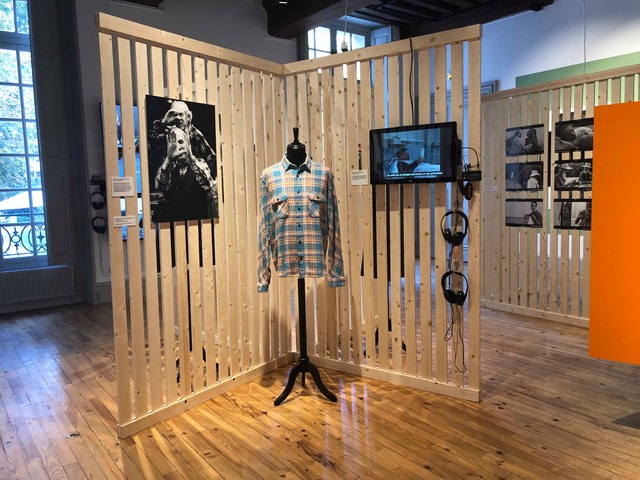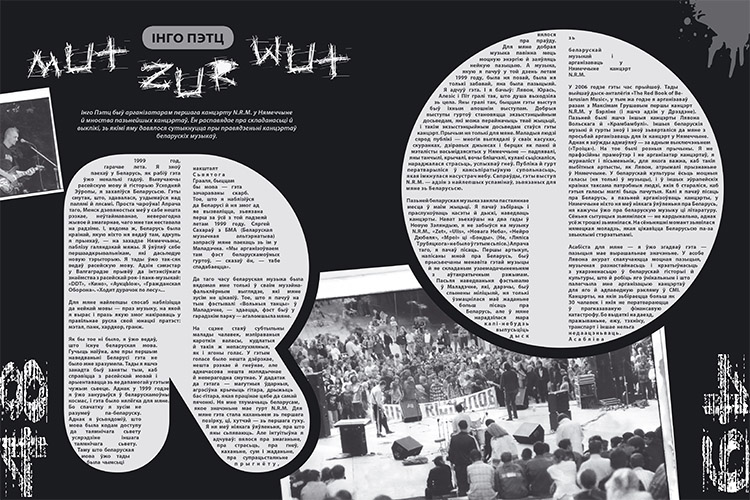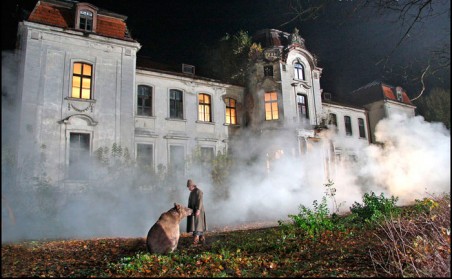
Massacre, dir. A.Kudzinienka / 2010
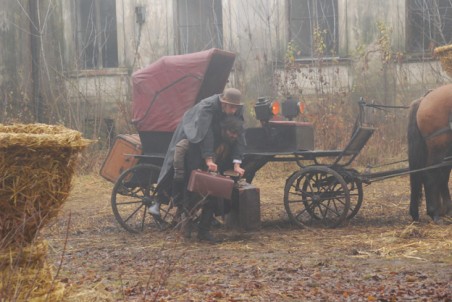
Massacre, dir. A.Kudzinienka / 2010
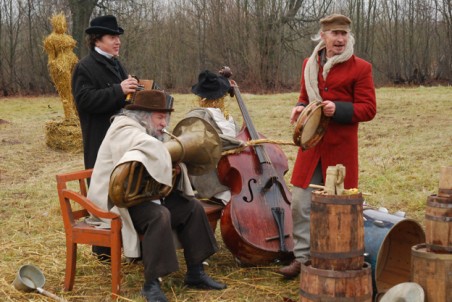
Massacre, dir. A.Kudzinienka / 2010
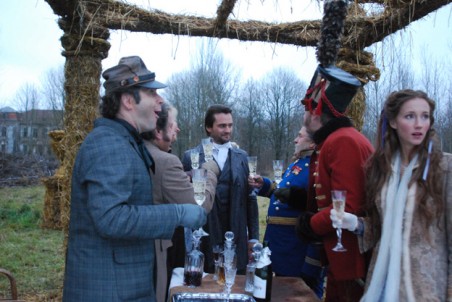
Massacre, dir. A.Kudzinienka / 2010
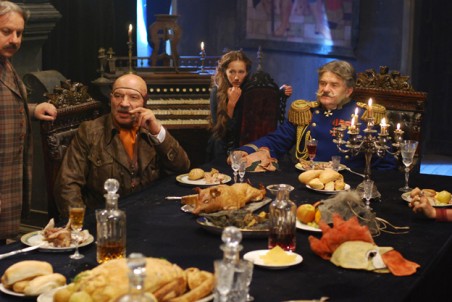
Massacre, dir. A.Kudzinienka / 2010
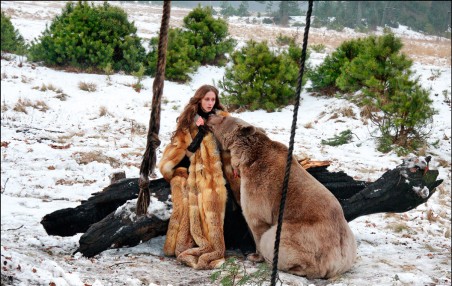
Massacre, dir. A.Kudzinienka / 2010
Archive! pARTisan #12’2010
VIOLENCE OF THE MEEK
About forty years after Straw Dogs, in the Belarusian film called Massacre it is straw that kills, too. A straw room chokes an intruding Russian general, its yellow walls moving, besieging and pushing him out. Just like in Straw Dogs, the hero won’t say a word about his anguish. Clenching his teeth, he watches the new owner making himself comfortable on the estate and the neighbours sucking up to him. He hears the invader breathing heavily after having humiliated his father. He sees his fiancée run away. And he cannot take any more of that.
He is just defending his house and his love. But the house is a palace and a bear’s den at the same time. And the hero is a count and a bear.
Meet a potato-horror – Massacre of the meek on the partisan paths.
THE PATHS OF DESPAIR
Massacre comes from dark forests, mysterious palaces, alcoves with their erotic games and the despair of werewolves. It is modelled on the famous gothic classics, the solid British sets rhyming with Artur Klinau’s straw installations, Dracula’s costume echoing with that of Ms Astrouskaja (Sviatłana Zielankouskaja), who drinks champagne and squeals nonstop. The banquet in a cold room reminds of not only English palace horrors, but also The Masque of the Red Death by Edgar Poe and Roger Corman.
The Italian magicians of horror films like Mario Bava and Dario Argento would enjoy the exquisite visual atmosphere of Massacre, created by cameraman Pavał Zubrycki and the artists. The fragile blue, yellow and dark-green frames, pulsating with fear and overcrowded with the sets, come very close to the Euro-cult Italian films.
Yet, the love scenes are an example of girls’ kitsch off-limits, delicately aristocratic and fatigued, just the way it should be with an old family of nobility. The Belarusian characters are dressed, and the eroticism is intertwined with a subtle irony. The western sexual film traditions look chaste in the Belarusian Massacre.
BELARUSIAN ROOTS
Massacre has a firm foothold in the Belarusian ground. It is not only because of the folklore werewolf traditions, but mainly due to its cinematographic roots. They are at least three:
a/ King Stach’s Savage Hunt by Rubincyk and Karatkievic;
b/ the avant-garde works by Valantin Vinahradau, particularly his Eastern Corridor ;
c/ ‘Occupation’ films, such as Occupation: Mysteries by Andrej Kudzinienka himself and The Watch Stopped at Midnight by Mikalaj Fihurouski.
POTATO-HORROR RULES
Although there is just one potato-horror, I will try to formulate its rules.
а/ social and political subtext with hints at struggle for liberation:
In Massacre it is represented by ‘Garibaldian’ partisans, the suppressed uprising of 1863, mentioned in passing, and the Polish national anthem, defiantly played to the Russian general. On the whole, the characters of Massacre are all disguised, they are either secret partisans or hypocritical conformists.
b/ ‘linguistic’ underground:
Like in Occupation, there is a mixture of languages, each of them fitting the character and his or her status. Russian is for the general and the flawed professor, obsessed with Pushkin; Belarusian is for peasants and the Orthodox gentry, and Polish is for Catholics.
c/style prevails over the precision of details:
Massacre has been slammed for lack of historical precision. Yet, for a potato-horror real history is not a fact but a starting point. By the way, what kind of historical precision can be expected from the costume of a count-turned-bear? Details should be subjugated to style, which is self-sufficient, excessive and exquisite. This is what Argento and Bava do. And this is what Andrej Kudzinienka succeeds in.
d/ the dialectics of fear – laughter – and horror may not yet be perfect, but the direction has been outlined:
Alfred Hitchcock gave examples of fear turning into laughter and then horror. Andrej Kudzinienka offers a bit different version of Hitchcock’s formula:
we expect something fearful, but mechanically repeated fear turns into an ironic reference to Dracula, gothic horrors, etc.
The slain guests in Massacre are satirical masks that make us laugh. We do not have the time to see their human nature, even for a moment before they die. Death reveals the final rule of potato-horror:
e/ metaphysical choice:
Good is from God and evil is from the devil; evil is lack of light. We all face this choice. It is this metaphysics that gives strength and meaning to the other potato-horror rules. Without the true picture of good and evil there is no real cinematography.
Andrej Rasinski
Photos © Andrej Bibikau, bibikau.livejournal.com
Views expressed are those of the authors and may not reflect opinion of the editors. If you note any error, please contact us right away.





